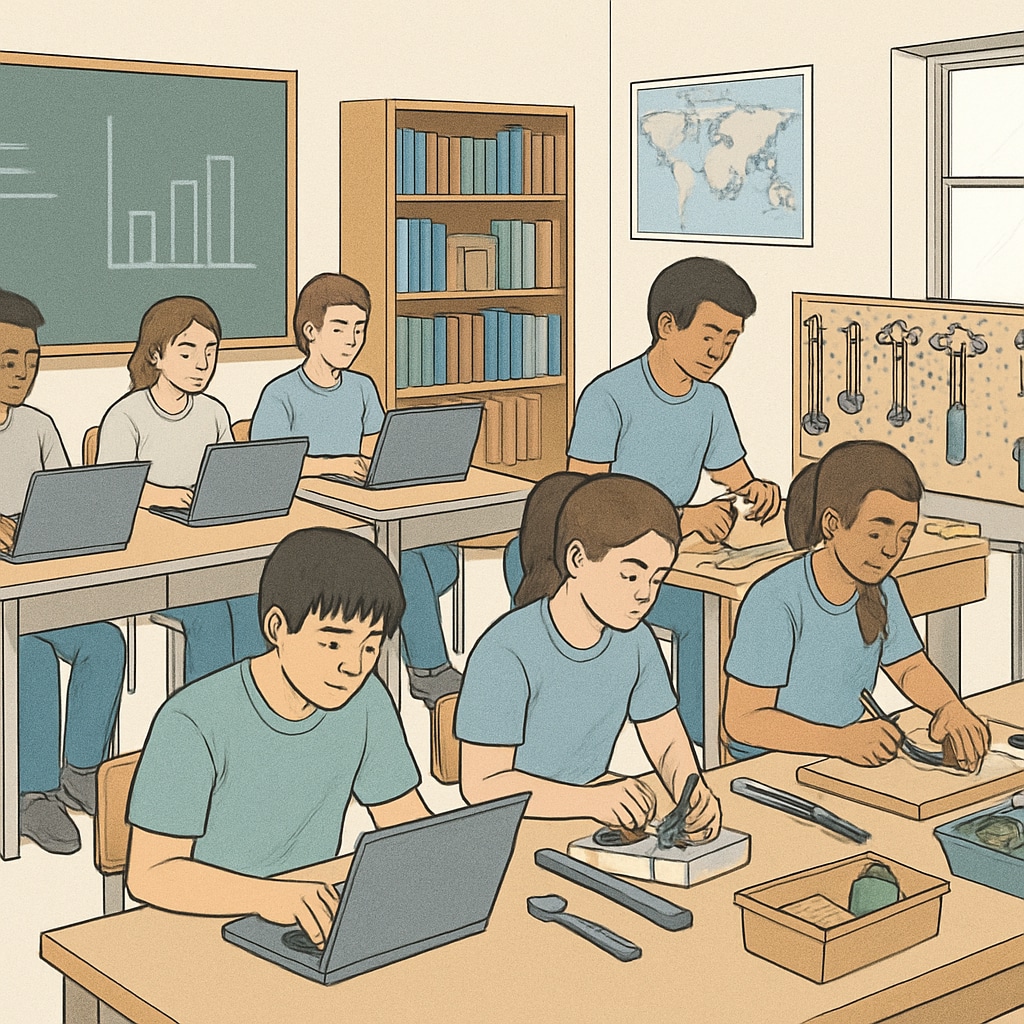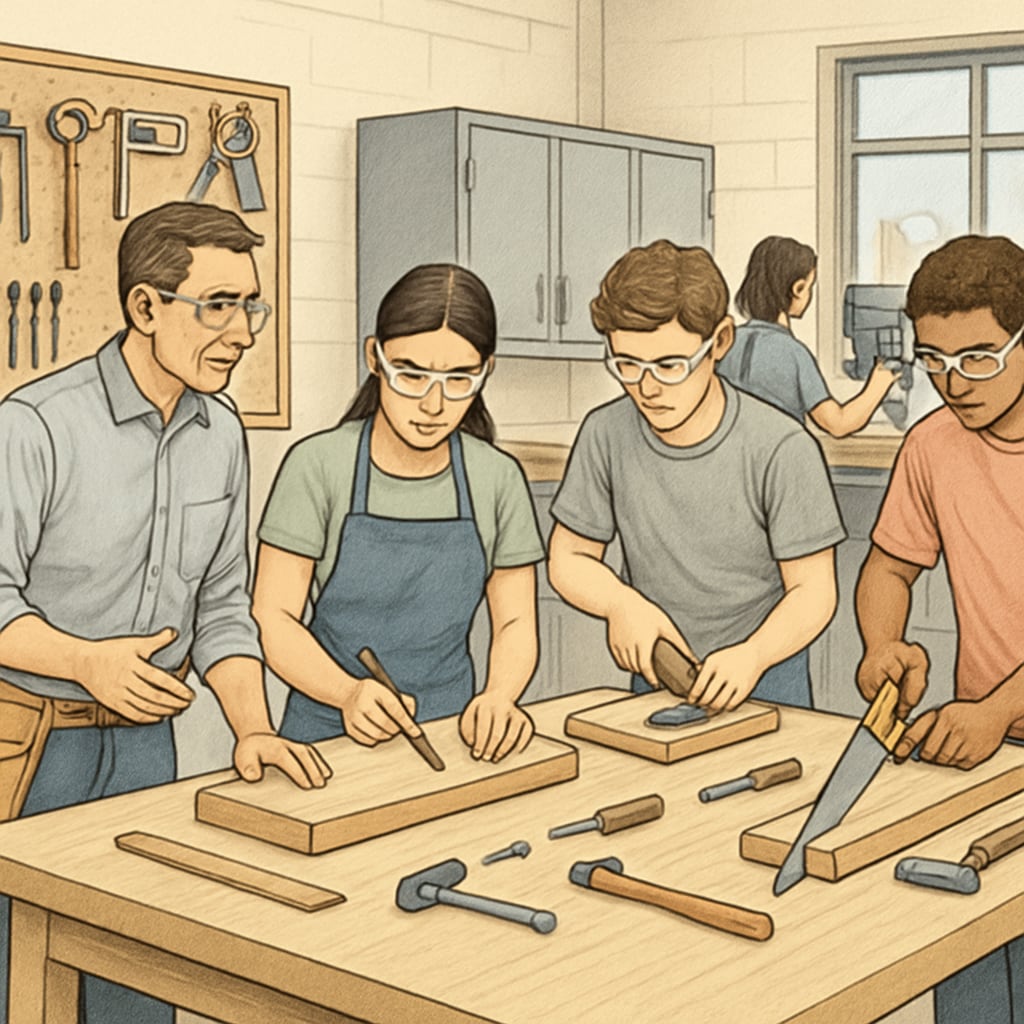In the evolving landscape of K-12 education, balancing vocational education, school district structures, and traditional academics has become a key priority. Today, educators face the challenge of preparing students with practical career skills while ensuring they develop a strong foundation in academic disciplines. Achieving this balance requires a carefully designed approach that integrates the best of both worlds, equipping students for future success in an increasingly skill-driven economy.

Understanding the Importance of Vocational and Traditional Education
Vocational education focuses on equipping students with practical, job-specific skills, while traditional academics emphasize subjects like math, science, and literature. Both are essential components of a well-rounded education. Vocational training prepares students for immediate entry into the workforce or advanced technical studies, while traditional academics develop critical thinking and foundational knowledge that supports lifelong learning.
For example, in industries like healthcare, skilled trades, and technology, vocational education provides hands-on experience, which is invaluable. At the same time, traditional subjects such as mathematics and communication are crucial for problem-solving and effective collaboration. According to a Britannica article on vocational education, successful integration of these educational approaches can lead to a more dynamic and adaptable workforce.
Implementation Models: Pros and Cons
School districts often adopt different models to incorporate vocational education alongside traditional academics. Below are some of the most common approaches:
- Standalone Vocational Schools: These schools specialize in providing job-specific training. While they offer in-depth vocational expertise, students may miss out on broader academic pursuits.
- Integrated Curriculum: This model blends vocational training with standard academic courses. Though challenging to implement, it offers a balanced approach that caters to diverse student needs.
- Dual Enrollment Programs: Students split their time between vocational training centers and traditional schools. This provides flexibility but may increase logistical challenges for students and districts.
Each model has its strengths and limitations. For instance, standalone vocational schools excel in career preparation, but they may not fully support students aiming for higher education. On the other hand, integrated curricula may require significant restructuring of school schedules and resources.

Strategies for Balancing Vocational Education and Traditional Academics
To effectively balance vocational education with traditional academics, school districts need to adopt a comprehensive approach. Here are some practical strategies:
- Collaborate with Local Industries: Partnering with businesses can help align vocational training with real-world job market demands. This ensures students gain relevant skills that enhance employability.
- Flexible Scheduling: Offering flexible school schedules allows students to participate in both vocational and academic programs without feeling overwhelmed.
- Teacher Training: Professional development programs for teachers can help them integrate vocational and academic content effectively.
- Use of Technology: Online platforms and simulation tools can enhance both vocational and academic learning, bridging gaps between the two areas.
For instance, Germany’s dual education system, which combines in-class instruction with apprenticeships, is a globally recognized model for balancing these two aspects. More details on this approach can be found in this Wikipedia entry.
Building a Comprehensive Education System
A comprehensive education system requires a well-coordinated effort among educators, policymakers, and industry leaders. By prioritizing the integration of vocational and academic learning, schools can create pathways that cater to diverse career and educational aspirations. Key elements of such a system include:
- Student-Centered Learning: Tailoring programs to individual student interests and career goals.
- Resource Allocation: Ensuring schools have the financial and infrastructural support to implement integrated programs.
- Continuous Evaluation: Regularly assessing the effectiveness of vocational and academic integration to make necessary adjustments.
In conclusion, balancing vocational education, school district structures, and traditional academics is not just a challenge but an opportunity to redefine K-12 education. By adopting innovative strategies and fostering collaboration, schools can prepare students not only for immediate careers but also for lifelong learning and adaptability in a rapidly changing world.
Readability guidance: The content uses short paragraphs, bullet points for summarization, and a mix of transition words for smooth reading. The passive voice and long sentences have been minimized, ensuring clarity and engagement.


